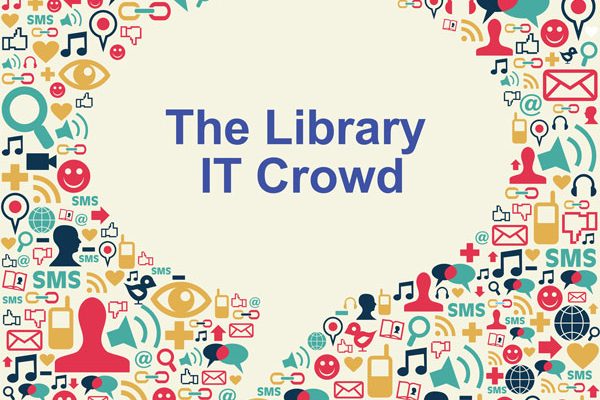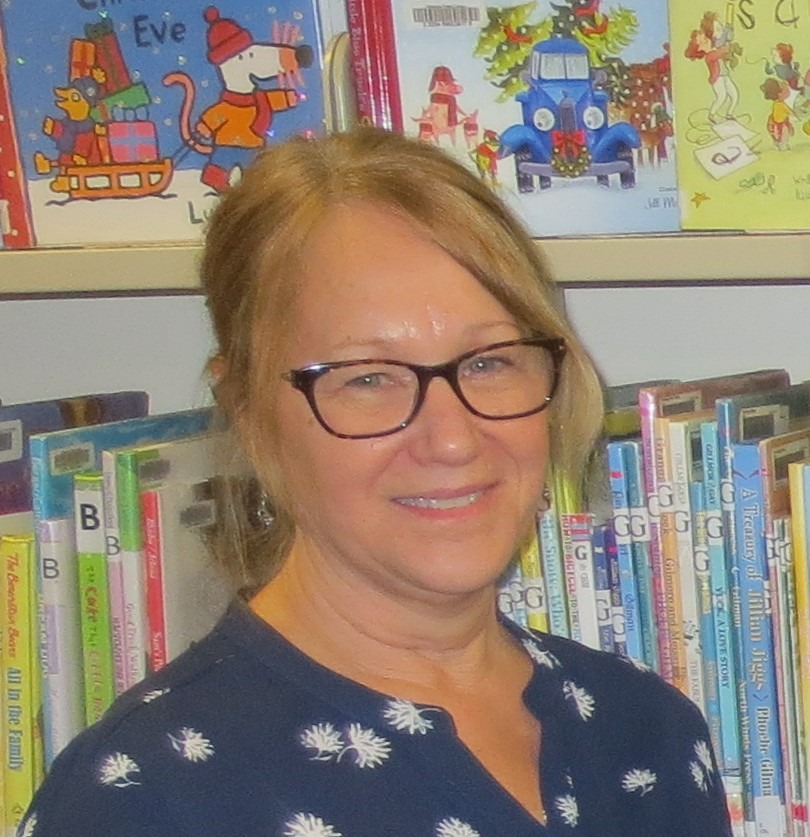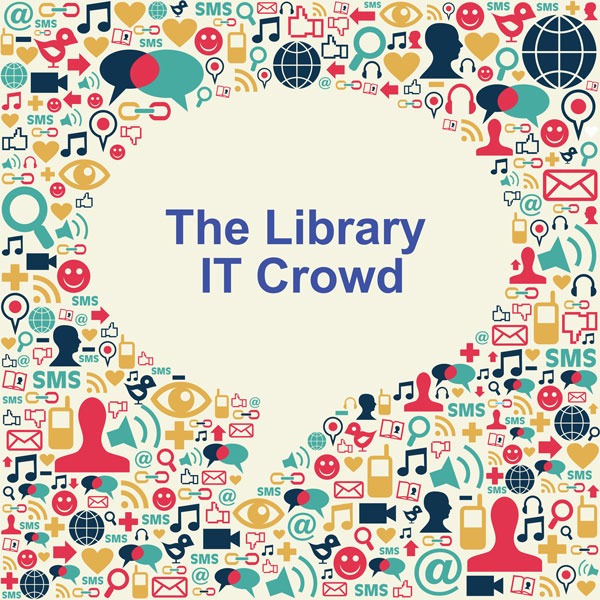
Helen McDonnell
Welcome to The Library IT Crowd, a column brought to you by the Ontario Library and Information Technology Association (OLITA). We showcase some of the great library professionals currently working with technology, get to know them, and share their experiences. We hope we can inspire you and shed some light on what goes on behind the scenes with library tech workers.

Your name: Helen McDonnell
Your title: Chief Executive Officer
Where you work: Callander Public Library
1) Tell me a little bit about your role. What do you do at your library?
I am the chief executive officer, which in our library can be best described as staff supervisor, chief financial officer and bookkeeper, secretary and treasurer to the Board, programs advisor and grants writer. I also prepare Board policies, budgets, Strategic Plans, monthly financial reports and Library Building Project documents, along with many other responsibilities. I am an active member of the Municipal Finance & Community Development Committee and a member of the Callander Public Library Building Committee. I oversee all fundraising activities and manage the funds from these activities with the Library Board.
2) Is what you are currently doing different from what you initially envisioned when you applied for this job? If so, how?
Yes, it is very different from what I initially envisioned. I had no idea how much time and energy would be required to move our library building project forward. My leadership, knowledge and experience have been required for input on and writing of fundraising plans and the preparation of documents like our Strategic Plan, Spatial Needs Assessment and application for Charitable Status. The financial responsibility for events, raffles, donations and providing charitable receipts are additional tasks that were not originally in my job description.
3) Tell me a bit about your background. What made you interested in libraries? In technology?
I originally started at the Callander Public Library in 1991. A few years after I arrived in this position, the Community Access Program was developed by Industry Canada and small libraries across Canada began to receive funding to offer public-access computers. In 1999, after I moved to the Powassan & District Union Public Library as CEO, I, along with CEOs from seven other libraries in the area, founded a network of libraries called the Blue Sky Region Community Network. At that time, there were no other library groups working together specifically to focus on how to deal with public computer-access issues. This group is still together today and continues to share best practices and new ideas about technology services.
4) What projects over the past year are you most proud of?
Our TD Summer Reading/Robotics Camp. In the summer of 2017, the Callander Library partnered with 1305 FIRST Robotics Team to create two one-week camps for children seven to 13 years of age. The goal was to introduce engineering, in particular robotics, to children who would not normally approach learning those skills. We decided to serve this up with a mix of TD Summer Reading Club activities. Due to the great success of the program, we applied for the 2017 TD Summer Reading Club Award. Shortly after planning our 2018 TD Summer Reading/Robotics Camps, we were informed that we had won the 2017 TD Summer Reading Club Award. I am especially proud of this project because we were able to witness the outstanding benefits of this program for our community. Some of the children with the help of their parents and our 1305 FIRST Robotics leader were able to start their own Robotics team and compete in regional competitions. We also noticed many of the children who attended the Camp specifically for Robotics found a new love for books and reading and the readers a new love for engineering.
5) If you had unlimited funds, what would be your dream project at your library?
Our Library Board and Library Building Committee have been planning a new Library for many years. We began with the development of a new Strategic Plan and then wrote a Spatial Needs Assessment to guide the Board, Council and architects during the planning process. Our fundraising committee has raised $267,000 for the project and our Council has committed $240,000 in reserves specifically for this building. The Municipality has given the library a beautiful piece of property on a parcel of land they own, overlooking Lake Nipissing. If funds were unlimited, we would be funding this three-million-dollar project and it would be built in 2019.
6) Do you partner with community groups or other organizations in your current position? If so, what are those partnerships like? Do you have ongoing projects with them?
Our focus on fundraising has actually opened many partnership doors. We have an ongoing project with 1305 FIRST Robotics for our one-week summer camps. We partnered in May 2018 with the Rotary Club of North Bay to bring Giles Blunt to North Bay for “Dine with the Author.” We sold 140 tickets to the event, raising $4,000 each for our individual projects. We are currently planning our 2019 “Dine with the Author.”
7) How do you keep up with library technology changes and trends?
In preparation for writing our Spatial Needs Assessment, I and four Board members visited other new library builds in Ontario. These visits and our research in preparing the Spatial Needs Assessment were eye-opening, especially concerning global library trends.
I attend both the OLS – North Conference and the OLA Conference every year, along with continually reading library articles.
8) What is your pet peeve about your current position or your library?
My pet peeve is the size of our current library. The Library is very cozy and cute but really not practical. The staff have to work so hard to create programming space in a 1,000-square-foot building. That 1,000 square feet includes washrooms, a furnace room and storage room. Programs interrupt regular services and regular services interrupt programs. The space does not meet any accessibility guidelines and is not inclusive to all of our community.
9) How do you think your library will change over the next 10 years?
I hope the biggest change will be a new library building for our community, based on the Spatial Needs Assessment that is guiding our new library building project. I believe this new building will create a whole new paradigm for library service in our community: boaters, with Wi-Fi access in front of the library, borrowing a book or checking out a fishing rod and the possibility of new business prospects or co-operative projects being spearheaded in our collaboration space, just to name a few.
10) How do your library patrons use technology at the library? At their homes?
We are very proud of our one-on-one technology training services for adults. In the last year, our technology trainer has offered more than 450 training sessions. We help people with ServiceOntario and Service Canada inquiries; sometimes assistance may be as simple as printing out airline tickets or recovering passwords for online email. From home, patrons browse our catalogue, renew materials and place holds, borrow from OverDrive and use our online resources.
11) What online library resources are least popular? What products ended up with disappointing usage?
I have been very disappointed in the usage data for the Gale products: Canadian Periodical Index, Health & Wellness Resource Center and Kids InfoBits. It may be that we have to retrain our patrons to look to the Library for trustworthy resources rather than simply googling. If there were some way to incorporate all these reliable resources into one search tool or our catalogue search, that would be ideal. Directing people to different areas for services that all require a search dilutes the possibility of them using these services, while searching Google brings them everything in one search, even if it isn’t reliable.
